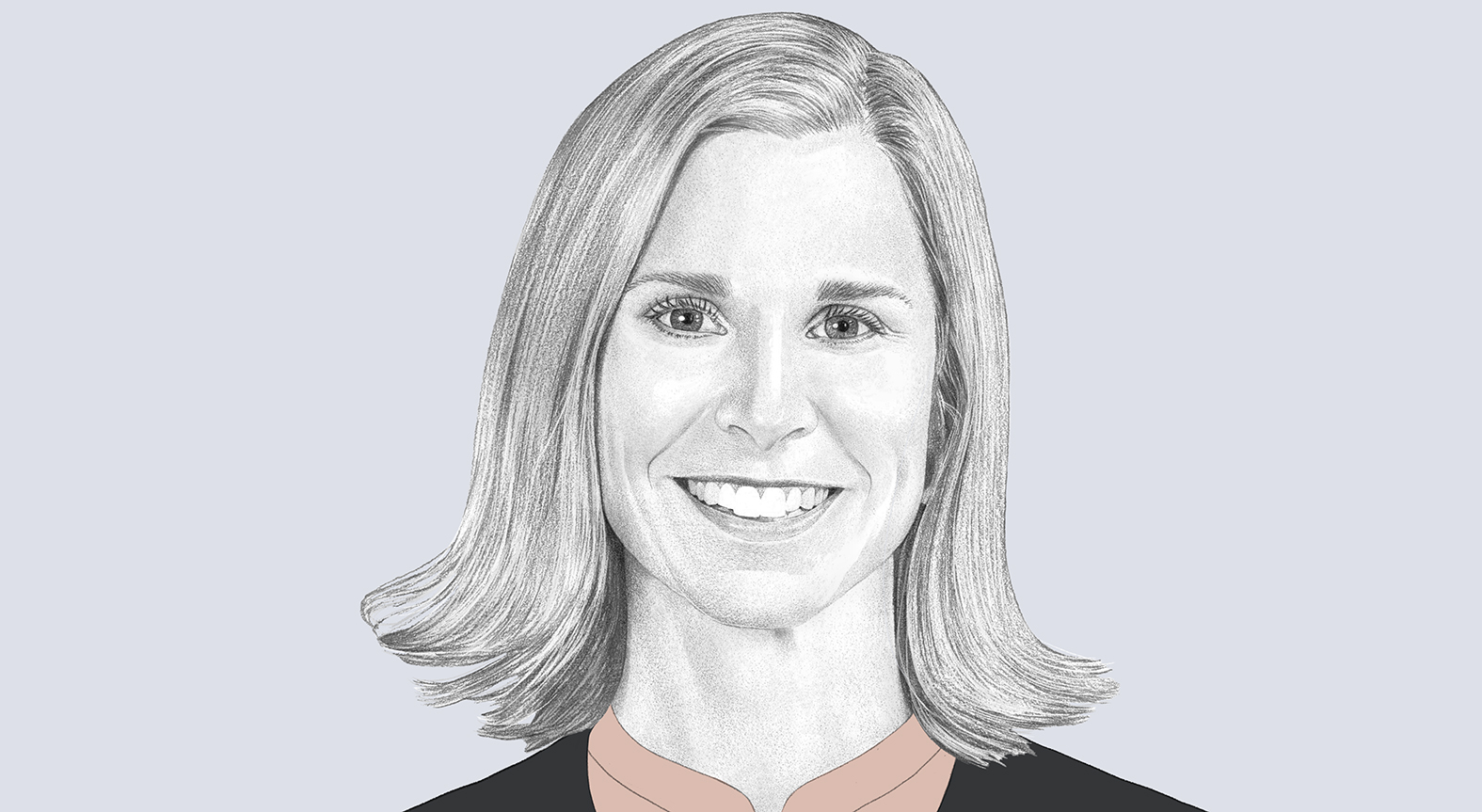 "May the God of hope fill you with all joy and peace in believing, so that you may abound in hope by the power of the Holy Spirit." (Romans 15:13)
"May the God of hope fill you with all joy and peace in believing, so that you may abound in hope by the power of the Holy Spirit." (Romans 15:13)
We live in a world where the pursuit of happiness is blurred by individualistic efforts to thrive, one where societal structures fail to inform or embody a communal vision of flourishing. It is difficult to envision a world where human potential is nurtured, affirmed and fulfilled — a place where infinite love shapes a shared reality.
One might ask how long the center will hold. Who will carry the vision forward? Who will relentlessly advocate for human dignity wherever care is provided? Who will bear the burden to assure the common good of our neighbors? Is it our leaders? The Church? Community activists?
Perhaps the better question is: What is ours to do?
For those of us called to Catholic health care, we know the abiding commitment to offer healing through Jesus' ministry and the heritage of the founders. In the spirit of the sponsoring congregations and because of our enduring ministry of love, we are rooted in a tradition that refuses to waver in providing care and extending compassion to all. And while those who serve our ministries embody courage, faithfulness and hope every day, this tumultuous year offers a special invitation to travel deeper into the journey of hope.
Let us explore how this Jubilee Year might strengthen our Christian/Catholic notion of hope amidst today's cultural crises.
WHAT IS HOPE?
Our tradition teaches that hope is more than wishful thinking or naïve optimism. Hope is within each of us, an accessible, eternal reality, even when it may seem imperceptible. God is the giver of hope, the source of hope and the object of hope.1 True to its nature as a gift, we cannot manifest hope ourselves. But in receiving it, we can be signs of hope for others.
When hope emerges, we are free to receive it and allow it to be our companion. Hope is united with love and faith, a mysterious triptych that can hardly be separated. (1 Corinthians 13:13) Hope is where our deepest longings lie secure in God, until they are fulfilled by God. Hope is an anchor for the soul, sturdy enough for us to cling to it in times of despair, for it holds hands with suffering. (Hebrews 6:18-19, Romans 5:3-5)
In Spes Non Confundit, the papal bull outlining the central message of the 2025 Jubilee Year, Pope Francis was clear: "Hope does not disappoint."2 The Lord is "our hope," he reminded us. (1 Timothy 1:1) "Hope is born of love," overflowing from the power of death and resurrection through God's son Jesus and enlivened by the continual renewal of the Holy Spirit working in and through us. In the perfect love of the Trinity, the light of hope illuminates our lives for the sake of love through the trials we face. But it is the dark of suffering, Pope Francis said, that creates the conditions for hope to be tested, and the cross of Christ to be our sustenance along our pilgrim way.
CONDITIONS FOR LOCATING HOPE
The late systematic theologian Jürgen Moltmann said that to be a theologian is to live theologically.3 Simply put, we embody what we believe, but our social location creates the conditions to pressure test what we profess. For us in Catholic health care, the conditions for hope to abound can be found around every corner — literally. Through hospital hallways, clinic corridors, break rooms and patient rooms, foyers, boardrooms and waiting rooms (virtual or real), the pilgrim path is ever before us. On this path, the course is charted to foster a renewed vision of hope. But is this easier said than done?
Perhaps you can relate: The email notification dings, and suddenly, you find yourself receiving unwelcome news you need to deliver to your team. The impact will be profound: budgets will be cut, staffing reduced, travel halted, and productivity measures will seem inhumane. "Where is hope?" you ask.
You might experience a similar response when lab test results come back as you feared. Life as you know it with your loved one will now be different. A new season is here, and the weight of grief is overwhelming. How will you manage care and maintain your current workload? Hope is last on your mind.
When the shadow of darkness hovers, the human spirit naturally tends to turn inward. Doubt is powerful, and isolation can tempt us to drink from the cup of cynicism or lose consciousness, drunk on self-sufficiency. "Ease the pain," echoes the black night.
SEEING HOPE
In the dark, a woman stood crying. It had been three days since Jesus' death. She knew every detail. It was slow; it was painful; it was brutal. She saw it all, the burial, too. Was her hope extinguished in Jesus' death? Did it die with him?
As she wept in the darkness and peered into the tomb, she recognized she was not alone. Two angels in white were with her. They asked why she was crying. She told them he was gone; they took his body, and she did not know where he was. And then, the Gospel of John says, "She turned around and saw Jesus there," her resurrected Lord, assuming he was the gardener. Then he asked why she was crying, and he called her by name: "Mary!" She turned to him and called him, "Rabbouni" (which means teacher in Hebrew). He sent her on her way to the disciples, to whom she announced, "I have seen the Lord." (John 20:1-18)
Through hospital hallways, clinic corridors, break rooms and patient rooms, foyers, boardrooms and waiting rooms (virtual or real), the pilgrim path is ever before us.
Fulfilled through the darkness of his crucifixion and the resplendence of his resurrection, Mary Magdalene saw hope as she looked right into the eyes of Jesus. The risen Christ, God's ultimate hope as the giver, source and object of hope, was now revealed to the world. Hope was present to Mary not because of wishful thinking, naïve optimism, her own belief or desire to manifest it, but through the love of the Father revealed through Jesus, the hope of glory.
TOGETHER IN HOPE
Hope is not a solitary endeavor. It flourishes in community, in the shared struggles and collective joys that define our human experience. In the healing ministry of Catholic health care, hope is an active presence, beckoning us to remain committed to the faithfulness of God in the midst of suffering for our patients, our loved ones and our world.
In his 2013 installation homily, Pope Francis offered a message of hope that did not disappoint, and one that brilliantly summed up his ministry: "Today … amid so much darkness, we need to see the light of hope and to be men and women who bring hope to others. To protect creation, to protect every man and every woman, to look upon them with tenderness and love, is to open up a horizon of hope; it is to let a shaft of light break through the heavy clouds; it is to bring the warmth of hope!"4
In this Jubilee Year of Hope, let us abound in hope together, not as individuals striving to maintain optimism, but as a community steadfast in faith, anchored in the cross of Christ, the hope of glory. As we walk along the pilgrim path, may we open up a horizon of hope around every corner where care is provided and our colleagues serve.
JILL FISK, MATM, is director, mission services, for the Catholic Health Association, St. Louis.
NOTES- Thomas Aquinas, The Summa Theologiae, First Part of the Second Part, question 62.
- Pope Francis, "Spes Non Confundit," The Holy See, section 1, https://www.vatican.va/content/francesco/en/bulls/documents/20240509_spes-on-confundit_bolla-giubileo2025.html.
- Jürgen Moltmann and Miroslav Volf, "Theologian of Hope: Remembering Jürgen Moltmann (1926 – 2024)," For the Life of the World, Yale Center for Faith & Culture, June 5, 2024, https://faith.yale.edu/media/theologian-of-hope-remembering-jurgen-moltmann-1926---2024.
- Pope Francis, "Homily of Pope Francis," The Holy See, https://www.vatican.va/content/francesco/en/homilies/2013/documents/papa-francesco_20130319_omelia-inizio-pontificato.html.
Pilgrims of Hope
As you consider what it means to be a pilgrim of hope, reflect on how your hope is tested and strengthened, personally and communally, during times of need.
When searching for hope:
- What do you love? What moves you to tears?
- What are your dreams for our nation and the world?
- What are you waiting for?
When renewing hope:
- In whom or what do you put your trust?
- How does prayer renew your hope?
- What readings or reflections inspire a theology of hope?
- What keeps you from fully embracing hope in the cross of Christ?
When hoping with others:
- Which relationships in your life most foster hope?
- How does the concept of pilgrimage shape your understanding of communal hope?
- What might it mean for you to imagine that God hopes, too?
- How are you a sign of hope for others?
